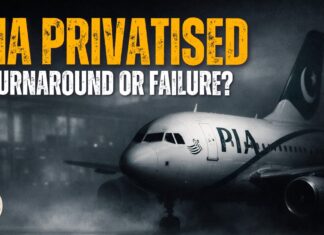Imagine that you are planning for a cross-country road trip from Karachi to Peshawar. You want to get to your destination in an optimal manner, where the journey is both comfortable and enjoyable. To do that you need a few things, key among them being an updated map with major points that you want to stop at during the journey, the ability and mental fortitude to drive for hours on end, and a recently serviced vehicle that can handle the journey without major issues. Now imagine that this road trip is a metaphor for the socioeconomic developmental journey for Pakistan: the map is the policy framework, the vehicle is representative of the institutions and ministries that need to drive you towards key goals, and the driver is the state and its leaders, key among them being the office of the prime minister.
When viewed within this context, the recently unveiled National Security Policy, it can be argued, performs the function of an updated map that provides the guidelines for making the journey. The document’s focus on the “safety, security, dignity, and prosperity of our people” is the right framing, and the policy’s internal focus reinforces the view that Pakistan’s external standing can only be improved when the citizens of the country are experiencing an improvement in their own lives. It also argues for a whole-of-government approach where there is a concerted effort to achieve “inter-departmental synergy” and policy continuity that is “ensured through democratic processes.”
There are other key points made in the document that a reader would nod in agreement with. But the fact of the matter is that this policy, for the time being, represents nothing more than words on paper (or bytes on a computer). In the socioeconomic developmental journey of the country, this document is just a map, an aspiration of a driver who wants to make a road trip from Karachi to Peshawar. We have had other documents with bold and visionary aspirations as well, including the Vision 2025 document published by the Planning Commission under the PML-N government. That document aspired to achieve a literacy rate of 90 percent and a primary school enrollment rate of 100 percent by 2025. It also argued that the “economy is targeted to grow by over 8% between 2018 and 2025 with single digit inflation,” and that this would be done through export-led growth. The vision articulated that this would raise GDP per capita “from $1,300 to $4,200,” and that this “export led growth strategy will help achieve $150 Billion exports by 2025.”
Reading the above in 2022, we can safely argue that none of the above targets set in the Vision 2025 document will be met. A key reason for this failure, ironically, were the very policies pursued by the government that published the Vision 2025 document.
It is for this reason that while recognizing the necessity and important of the National Security Policy, we must focus on execution. This requires looking at the clearly articulated map and assessing and improving the capacity of both the vehicle and the drivers responsible for making this journey. We all know that there are severe governance challenges facing Pakistan, key among them being the reform of a colonial institutional setup that was designed and developed with the specific purpose of extracting wealth out of the citizens of this land. This system has evolved and mutated over the years, but its core structural priorities remain the same. Therefore it is no surprise that every spurt of growth experienced by this country since independence further widens the gulf between the haves and the haves-not. This problem is exacerbated by a lack of policy continuity, institutions that overstep their bounds, and a public discourse that continues to divide, polarize, and engage in sloganeering at the expense of nuance debates focused on resolving some of these pressing challenges.
We have already seen the impact of this disconnect undermine the aspirations of the National Security Policy: while the document seeks “to build sufficient public and private capacity to take Pakistan into a new technological era,” institutions responsible for executing on this policy are pursuing actions to ban crypto in the country, which is a critical component of the evolution of the internet, referred to as Web 3. And this is only one of several examples that can be pointed to in order to highlight that actions rarely align with the vision articulated by successive governments.
A mentor during my first job out of undergraduate sat us down once and told us to be careful of believing that making a roadmap was the end all be all. In his words, “execution eats strategy for breakfast, lunch, and dinner.” We will have to wait and see whether the state can execute on its policy vision, but early indications suggest that a lot will have to change before policy translates into meaningful action.








Let’s Hope for the best